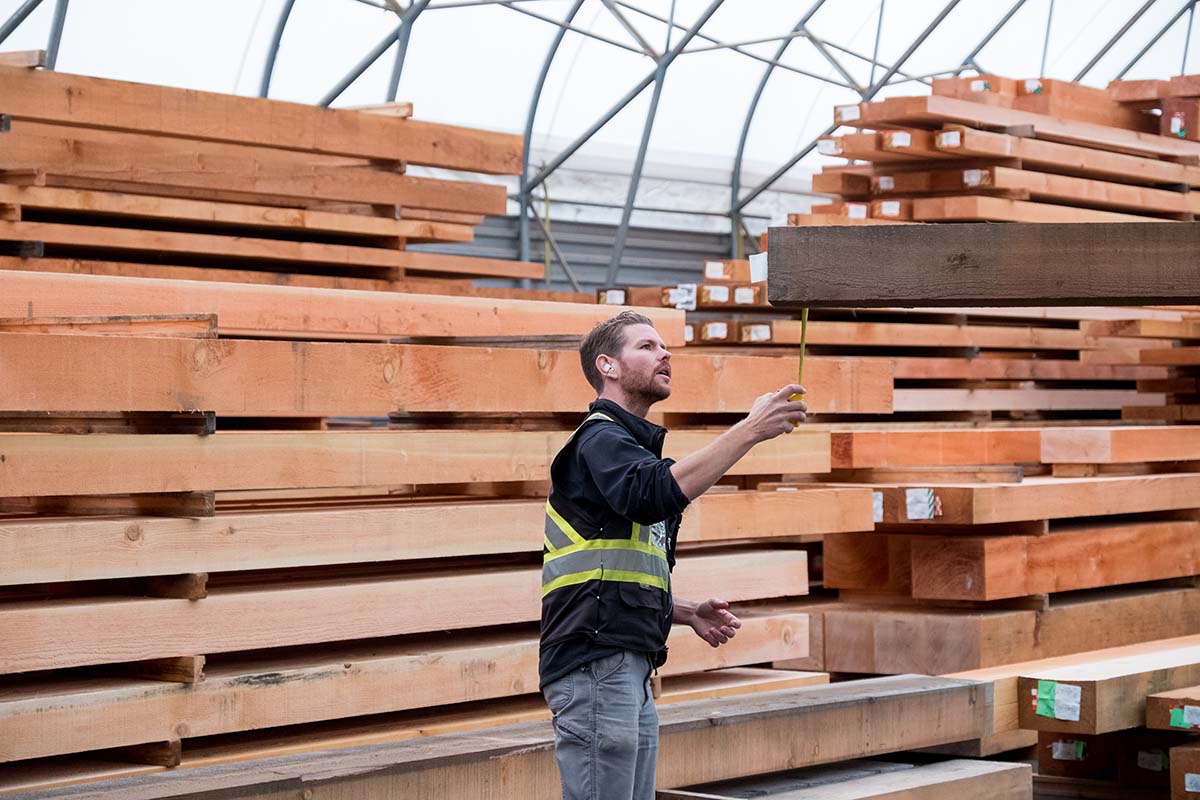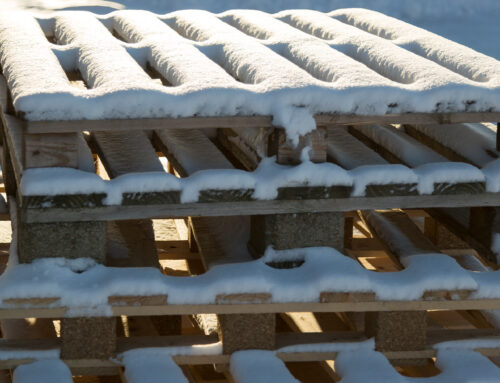Sometimes when you get a load of lumber, you may find yourself wondering how to tell if lumber is treated. Don’t feel bad about it, if you’re involved in the lumber business, it’s easy to lose track of what’s what sometimes! That’s why we’re here to give you some easy ways on how to tell if lumber is treated.
Treated lumber is one of the most common forms of lumber on the market. With that being said, lumber professionals have a few ways to identify treated lumber. Some of these ways are pretty straightforward, and some of them are a little more traditional.
In the lumber industry, lumber stamps and tags are often used, as well as fact sheets. On the other hand, some lumber professionals can simply look at or smell lumber to tell if it’s treated. Let’s get into it so we can answer your question – how to tell if lumber is treated!
Lumber Stamps/Tags
Stamps and tags have been used for quite a while in the lumber industry. They can be used for the identification of treatment, species, use, and more! In this case, however, we’ll be telling you what to look for so you can see how to tell if lumber is treated.
Lumber stamps are easily identifiable markings on lumber. They can be found on cut dimensional lumber, pallets, crates, and other wood products. Chemical treatment markings typically show up as abbreviations such as Bor, FDN, or ACQ. All of these abbreviations stand for different forms of chemical treatment that show that the lumber is treated.
Lumber tags on the other hand are usually clearly marked if present. These tags include vital information such as the chemicals used to treat the lumber, the company that treated it, species, and more. Although this is what typically is on lumber tags, tags can vary in what they include.
In normal circumstances, these markings are easily identifiable and should be present on most lumber that you come in contact with… That being said, industrial lumber can sometimes be a little bit different. If you’ve worked in this industry for long, you’ll know that the industrial side of the lumber industry is a little less polished than the commercial side.
Fact Sheet
To truly know if your lumber is treated, a fact sheet will surely show you whether it is or not. Fact sheets are produced by the manufacturer and, depending on the manufacturer, come with loads of lumber. If you don’t have a fact sheet that comes with your lumber, you can request one from the manufacturer.
Fact sheets give descriptive information on what exactly you ordered. The fact sheets should include your order size, the description of your order (dimensions, species, etc.), and the form of chemical treatment your lumber has undergone.
It’s that easy! If you’re searching, “how to tell if lumber is treated?” Look no further. Simply ask for a fact sheet!
Sight Test
Sometimes you don’t have the convenience of having a stamp/tag or fact sheet, leaving you wondering how to tell if lumber is treated. In that case, there are some tricks that lumber professionals have been using for years to tell if lumber is treated.
When lumber is chemically treated it undergoes various chemical reactions when it’s applied to the wood. Depending on the chemical, the wood can turn various shades of blue or green. You may have seen wood that looks olive green or have a blue hue, this is the result of chemical treatment.
Over time, these colors may fade, but evidence of chemical treatment remains inside the wood. If you’re checking older wood for treatment, cutting against the grain of the wood should reveal that the flesh underneath is not the natural color of the wood. The wood inside should still have slight color distortion.
This isn’t a defect, but rather evidence that your lumber has been thoroughly treated. Either way, with evidence of unnatural colors in the wood, you can rest easy knowing that your lumber is treated.
So, how to tell if lumber is treated? Look at! More accurately, look for the right signs.
How to Tell if Lumber is Treated? Smell it!
The chemicals used to treat lumber are ridiculously effective at preserving the wood. However, these same chemicals give off an extremely strong scent that can be detected very easily. If your lumber smells oily or like gasoline, it’s treated.
This smell will last a while, but not indefinitely. If you’re trying to figure if older lumber is treated, this might not be the best method for you. If your lumber is new though, you’re in the clear to use this technique.
Also, because it’s worth mentioning, if your lumber is freshly treated and smells strongly, make sure to keep it in a ventilated area so that strength can dissipate.
A great way of how to tell if lumber is treated? Smell it!
It Really is That Simple!
Confirming if your lumber is treated or not can be an inconvenience for sure, but knowing how to tell if lumber is treated is pretty important. So the next time you find yourself wondering how to tell if lumber is treated, just remember our four easy steps!







